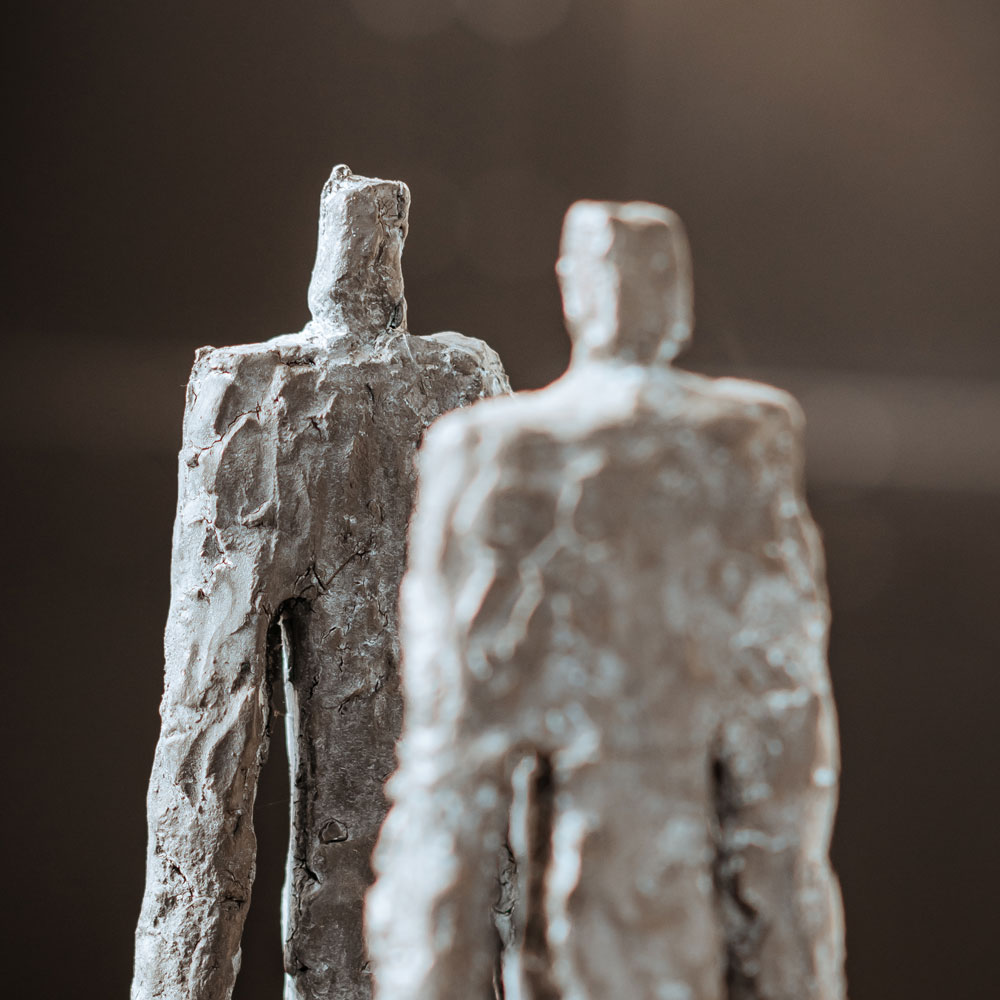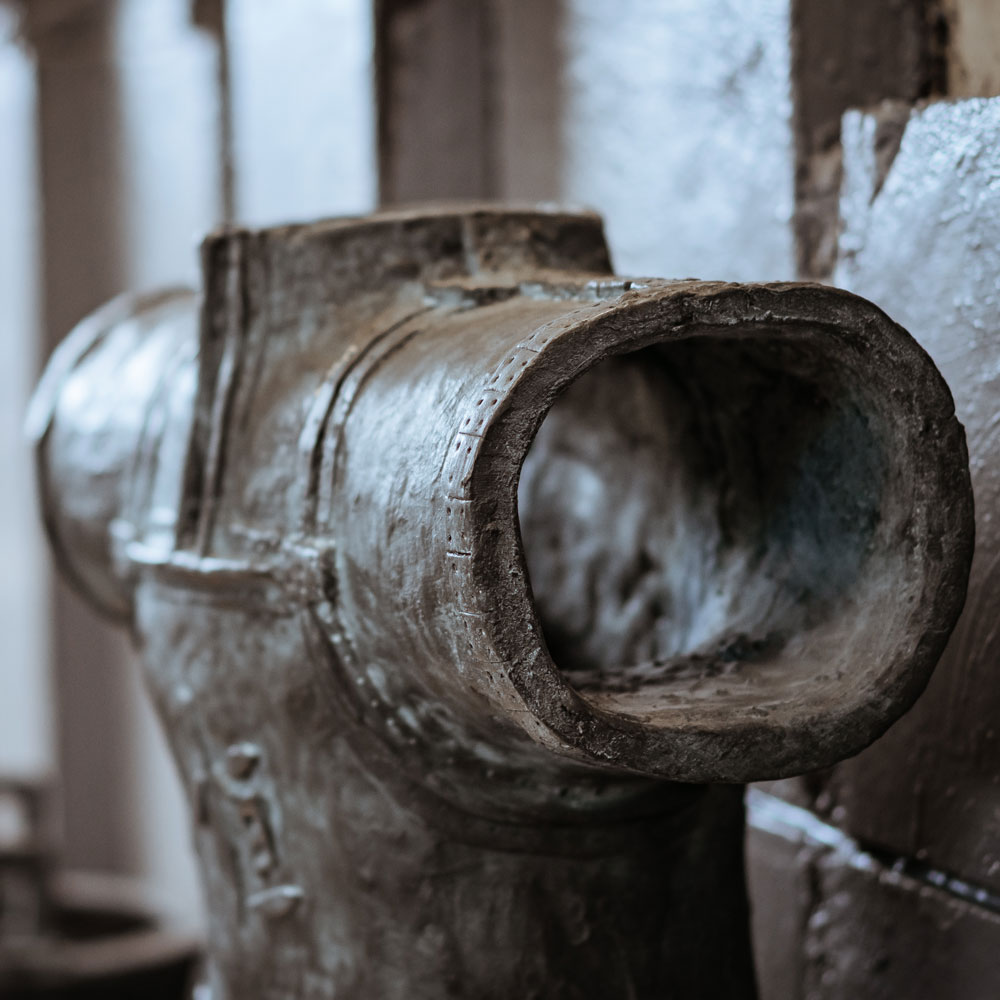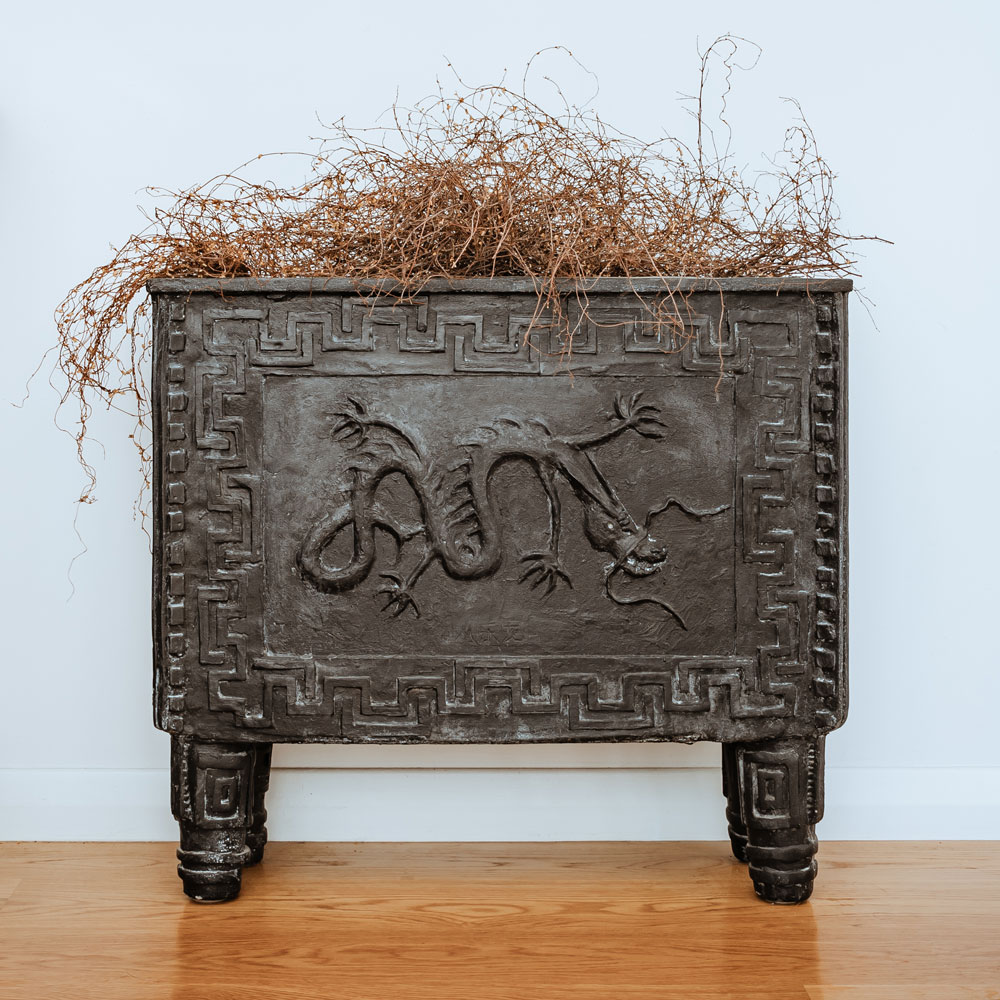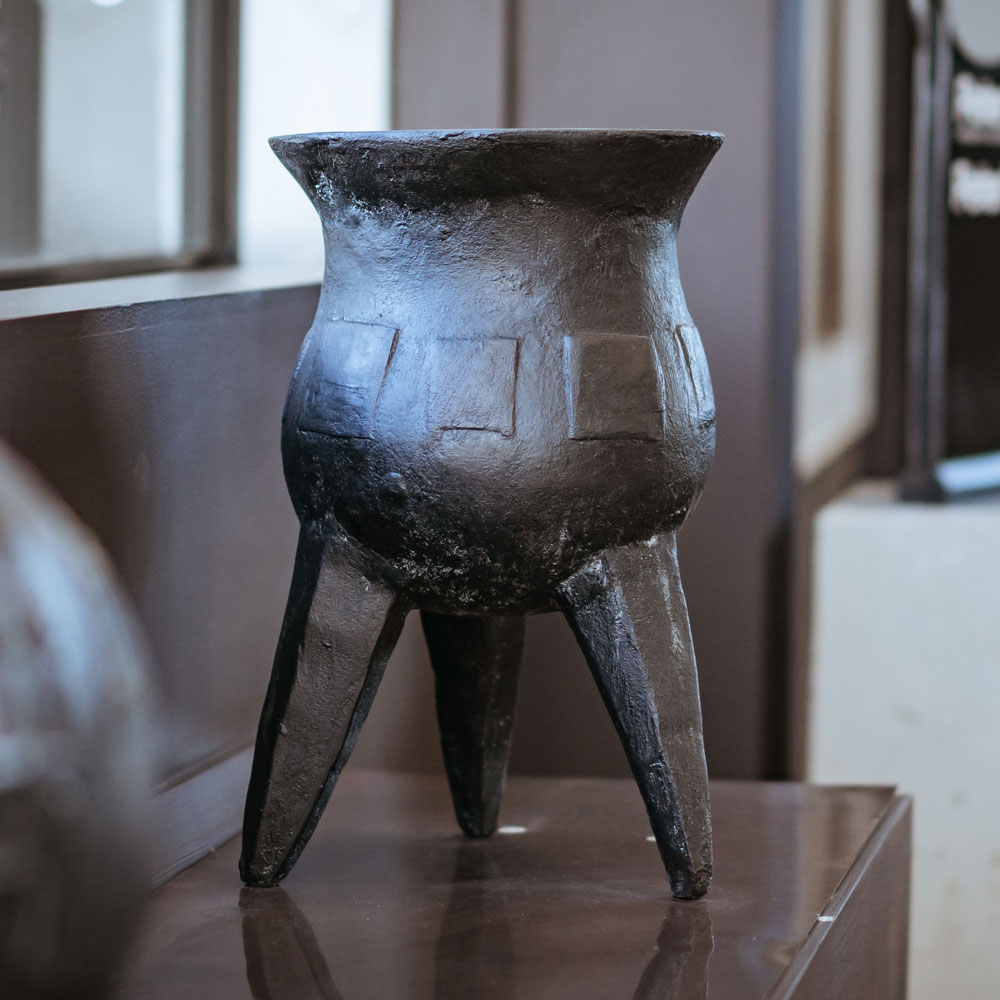What kind of surfaces can I use Sophisticated Finishes Metallic Surfacers on?
Metallic Surfacers can be applied to virtually any paintable surface, including wood, masonry, plaster, metal, cloth, canvas, paper, plastic, glass, etc. If you can paint it, you can successfully apply a Metallic Surfacer to it. As with any “painting” project proper surface preparation is 80% of having a successful outcome so make sure the surface is clean, dry and free of grease, oil or loose material from previous paint applications. Some surfaces such as aluminium or galvanized metal may require special surface preparation or primers specifically formulated for these materials.
What makes Sophisticated Finishes Metallic Surfacers different from paint?
Even though our Metallic Surfacers look and apply just like any water-based acrylic paint, they are very different in that they contain real metal not pigment or the mica flakes commonly used in other “metallic paints”. Rather, they are an ingenious blend of finely ground metal flakes (copper, bronze, iron, steel, aluminium) in an acrylic binder that creates the look and durability of a true metal surface. Once coated with our Iron Metallic Surfacer for example a magnet will stick to the “painted” surface. They are all suitable for both interior and exterior use. The Iron, Copper, Bronze and Gold Metallic Surfacers are reactive. That is they can be oxidized with one of Antiquing Solutions to develop a rust or patina finish.
Do I have to prime the surface?
Metallic Surfaces have excellent adhesion and priming is not necessary in many cases if the surface is in good condition and presents no unusual adhesion challenges. Highly absorbent surfaces such as concrete or plaster, if primed will absorb less of the Metallic Surfacer, but technically do not need to be primed. Surfaces such as glass or plastic that are very slippery should always be primed. Some surfaces such as aluminium or galvanized metal may require special surface preparation or primers specifically formulated for these materials. If you are planning to use one of our Antiquing Solutions on a Metallic Surfacer that is being applied to Iron or Steel the surface must be primed with a high-quality rust inhibiting primer first. The Antiquing Solutions can work their way down through the Metallic Surfacer and reach the iron or steel and produce rust that will erupt through the surface. If using a solvent based primer allow 24 to 48 hours of cure time before coating with the Metallic Surfacer.
I applied the Patina Antiquing Solution to real copper, brass or bronze and the surface turned black or brown not green. Or it turns green but flakes off in large pieces. What is wrong?at is wrong?
The Antiquing Solutions work by oxidizing the zinc that is found in these metals and is formulated for the percentage of zinc content in our Metallic Surfacers. In solid copper, brass or bronze surfaces the zinc content varies greatly and in some cases, the Antiquing Solution “burns” the surface brown rather than slowly oxidizing into the desired green or blue patina. The solution to this problem is to re-clean the surface and apply a diluted version of the Antiquing Solution. You may have to dilute the solution by as much as 50% to 75% to find the correct strength. In some cases substituting our Rust Antiquing Solution proves to be a more reliable approach.
Can your products be used outdoors?
All Sophisticated Finishes products are designed for both indoor and outdoor applications. You may elect to seal your patina/rust finishes or not. If you don’t, the finish will further develop over time with exposure to the elements.
The Metallic Surfacer looks milky-white. Is it going to change color?
Unlike our Antiquing Solutions, the Metallic Surfacers look the same in the bottle as they will when applied. If they look clear or milky, SHAKE OR STIR WELL, to endure proper distribution of the metallic particles. Since the metallic particles are the heaviest component of the paint, they tend to fall to the bottom of the bottle. If the product is over a year old, the metallic particles may have solidified in the bottom of the bottle. Use a pencil or similarly shaped object to break it up and shake the bottle again.
I applied the Patina Antiquing Solution to one of the copper, gold or bronze Metallic Surfacers and no change in colour took place.
In order for the Patina Antiquing Solutions to oxidize the metal in Metallic Surfacers the final coat of Metallic Surfacer must still be slightly wet to the touch. Once fully dry the acrylic binder seals off the metal flakes and the Patina Antiquing Solution will have little to no effect. Typically you have from 10 to 20 minutes of open time to apply the Patina Antiquing Solution but this will vary with temperature and how absorbent the surface is. On a large project you should work in small segments or apply the Patina Antiquing Solution as you paint. A simple way to paint and antique large surfaces is to apply the Metallic Surfacer with one hand and the Patina Antiquing Solution with the other as you move along the project.
I applied the Rust Antiquing Solution to the Iron Metallic Surfacers and no change in colour took place.
Unlike the Patina Solutions the Rust Antiquing Solution is applied to the Iron Metallic Surfacer after the surface has dried, typically 8 to 10 hours. Apply the Rust Antiquing Solution to the still wet Iron Metallic Surfacers usually results in no colour change and letting the Iron Metallic Surfacer “cure” beyond the recommended 8 to 10 hours also usually results in no colour change. The other most frequent reason for no colour change is that not enough of the Iron Metallic Surfacer was applied. We suggest at least two thick coats and that the liquid is fully stirred to ensure that the chunks of iron a fully integrated into the paint.
Why won’t the patina to stick on solid copper? It flakes off!
The most common reason for a patina not to stick to solid copper, brass or bronze is that there is something between the raw metal and the patina, such as tarnish, dirt, grease or lacquer. Use Sophisticated Finishes Metal Cleaning Solution to remove tarnish, old lacquer, dirt and grease. For especially thick lacquers, use a lacquer remover. We also recommend that the surface be scuffed or buffed with steel wool, emery cloth or sandpaper for optimal adhesion.
How do I get the patina just the right shade of green?
The patina that develops is the result of a very organic process. The colour is influenced by a wide range of environmental conditions including; temperature, humidity and air quality. The colour is also influenced by the amount of solution being applied and the method of application. Spraying or misting the solution on for example seems to slightly alter the ph of the acid and can impact the colour. The source and age of the metal also influences the patina colour. In short, it is virtually impossible to predictably obtain or consistently obtain any specifi c shade of patina. When consistent colour is wanted we recommend you treat all parts of the project in the same manner and time frame as possible.
How do I get the rust finish just the right shade of brown when applying it to the Iron Metallic Surfacer?
The typical rust finish that develops following our standard instructions is usually a light to dark brown. Sometimes a yellow or orange type look will result. The rust finish that develops is the result of a very organic process. The colour is influenced by a wide range of environmental conditions including; temperature, humidity and air quality. The colour is also influenced by the amount of Iron Metallic Surfacer and the amount of Rust Antiquing Solution applied and the method of application. Spraying or misting the solution on for example seems to slightly alter the ph of the acid and can impact the colour. In short, it is virtually impossible to predictably obtain or consistently obtain any specific shade of rust. When consistent colour is wanted we recommend you treat all parts of the project in the same manner and time frame as possible. What in general we find is that if you apply the Rust Antiquing Solution to the Iron Metallic Surfacer sooner then the suggest 8 to 10 hours after applying the Iron Metallic Surfacer the more likely you be to get the yellow or orange colour. We suggest you make a test board with multiple small test areas of the Iron Metallic Surfacers and apply the Rust Antiquing Solution at timed intervals to see if you can find a dry time that produces the colour you desire.
I applied the Rust Antiquing Solution to a real iron or steel surface and no change in colour took place.
The metal surface must be clean and free of all dirt, grime, protective coatings and in the case of iron any mill scale. Wrought iron in particular usually has been painted and the Rust Antiquing Solution will not work on a surface with any sort of paint or sealer on it. The Rust Antiquing Solution is a mild acid that triggers the oxidation of the iron into rust and provided that it properly comes in contact with iron or steel will always trigger some type of colour change.
I applied the Patina Antiquing Solution to real copper, brass or bronze and no colour change at all took place.
The Patina Antiquing Solution is a mild acid that triggers and speeds up the natural oxidation of the metal. This process requires the metal to be clean and free of all protective coatings, grease, grime, fingerprints or any other substance that will prevent the acid from entering the pores of the metal and triggering the oxidation. When no colour change after the Antiquing Solution has been applied takes place the surface needs to be cleaned or a protective coating removed. For general grease and grime you may use any commercial metal cleaner or a mild solution of TSP gently applied with 0000 steel wool or a Scotch Brite Pad. If some type of lacquer finish has been applied you may have to use a paint remover or solvent to remove the finish. Some copper and brass objects have a baked on permanent type finish that cannot be removed. If the Patina Antiquing Solution is coming in contact with the metal it is virtually impossible for no chemical reaction to occur so when no change at all takes place cleaning or removing whatever is preventing the interaction between the solution and the metal surface should solve the problem.
Are the Antiquing Solutions and Patina finishes hazardous?
The Antiquing Solutions are a mild acid and can cause irritation to the skin and eyes. In general, they are considered consumer friendly and carry no special restrictions and require no special safety precautions other than the normal effort to keep the liquid out of the eyes and to avoid prolonged skin exposure. We do suggest that if you are spraying the Antiquing Solutions that you wear a mask to avoid breathing the vapours. The Patina that forms from the result of this process also contains salts and materials that you do not want to breathe or come in contact with food. Rain run off in particular can lead to contamination of fish-ponds if a treated statute or object is placed near a pond or fountain. Any patina finish used on a kitchen surface should be sealed.
Do I have to seal the Metallic Surfacer and/or Patina and Rust finish?
The Metallic Surfacers are totally weatherproof and exterior grade and do not have to be sealed. We suggest sealing if the finished surface is going to be subjected to frequent handling or contact or if extreme weather conditions are going to present. The Patina and Rust Finishes are also weatherproof but you will experience rain run-off from them that can stain surrounding surfaces. You can seal the Patina finishes with our Clear Sealer or any high quality acrylic or solvent-based sealer (do not seal with a urethane or polyurethane sealer). You will see some modest change in appearance and testing the final look is always recommended. Sealing a rust finish will more dramatically alter the natural look of the finish and can change the appearance in what most feel is a very negative way. All sealers will impact the look of a rust finish to some extent but a very fine automotive grade solvent-based sealer seems to work the best. With both the Patina and Rust finishes you are trying to seal what is by definition an unstable and difficult surface. The most effective sealer solution we have found for those the most durable and stain-preventing sealer is to apply a twopart epoxy sealer. These are quite expensive and will change the appearance even more dramatically but are most effective at overcoming the problem of trying to adhere a sealer to the loose and powdery surface.
Can I mix the Metallic Surfacers together?
Yes, all of the Metallic Surfacers are compatible and can be mixed together. In fact, any high-quality acrylic paint can be mixed with the Metallic Surfacers. Mixing the paints can alter the reactive nature of the coatings and change the colour and patina finish that develops when an Antiquing Solution is applied. A favourite look is to apply a thick coat of Iron Metallic Surfacer and the “scrunch” other Metallic Surfacers such as Copper or Bronze into the iron surface. When you then apply one of the Antiquing Solutions the Iron will rust and the Copper or Bronze will turn green or blue creating a multi-colour look.
What are the Tinting Solutions for?
Burgundy Tint and Black Tint are formulated for achieving highlights and multicolor effects over patina finishes or metallic finishes. You can apply tints to a patina before or after the patina is dry, depending on the effect you wish to achieve. Applying tints to a fully dried surface will result in a more saturated tint. Applying tint to a still developing or wet surface will dilute the tint. Excess tint may be removed by blotting with a dry rag. A more complex look can be achieved by using both Black Tint and Burgundy Tint.
How much do I need to cover a certain area?
Here is the approximate coverage for an application of two coats, but it may vary depending on the surface texture.
Imperial Metric
16 ounce 32 sq. ft. 472 ml 2.97 sq m
8 ounce 15 sq.ft. 235 ml 1.39 sq m
4 ounce 8 sq.ft. 118 ml 0.74 sq m
2 ounce 3 sq.ft. 59 ml 0.27 sq m
1 ounce 2 sq.ft.
29 ml 0.18 sq m
How do I clean up after using your products?
All Sophisticated Finishes products are water-based, so they easily clean up with water.



